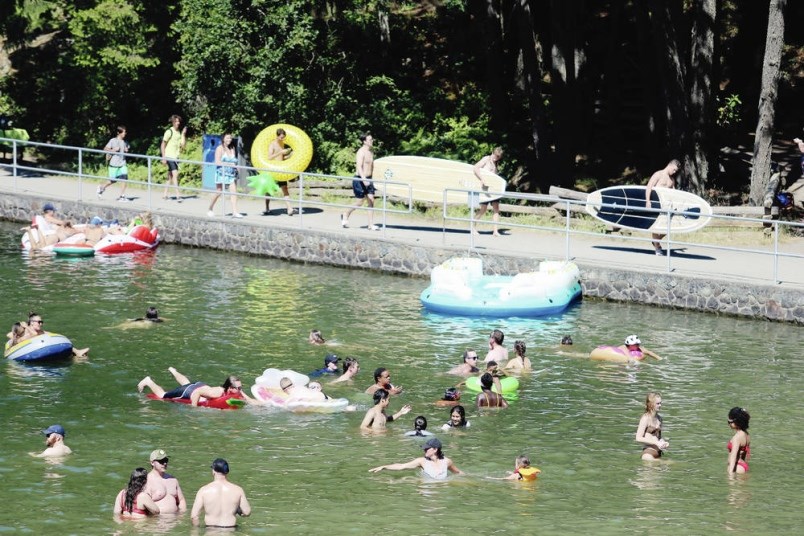Heat waves like the one smashing all-time weather records across B.C. this week will become more common and much worse, Canada’s best known climate scientist said Tuesday.
“We ain’t seen nothing yet. This is chump change compared to where we are heading,” said University of Victoria professor and former B.C. Green Party leader Andrew Weaver.
On Monday, Environment Canada recorded a high of 39.8 C in Victoria, the hottest temperature ever at Gonzales Point, where records have been kept since 1874.
On Sunday, 43 all-time daily maximum temperature records were broken, said Environment Canada meteorologist Armel Castellan. On Monday, another 43 daily maximum temperature records were smashed again.
“All the records broken on Vancouver Island and the Sunshine Coast are all-time records, not daily, not just June, but annual maximum temperature records,” said Castellan.
In Lytton on the mainland, the thermometer soared to 47.9 C on Monday. Port Alberni was the hottest place on Vancouver Island at 42.7 C
The heat wave began Friday when an intense high pressure system settled over B.C., creating a stagnant heat dome.
COVID-19 immunization clinics were forced to close or move, restaurants and schools closed. Ice machines at gas stations were empty, but beaches and lakes were full. People were hot, sweaty, irritable and sleep-deprived. But we may have to get used to it.
The scientific community has been predicting weather events like this for decades, said Weaver.
“We know that the trend is towards dramatic increased warmth. We know Canada is warming at twice the world rate. We know that we expect there to be an increased likelihood of extreme heat as we move forward, but we also expect that the records will be broken on the high end and much less frequently on the low end,” he said.
“You might not see an event like this for a couple of years and then you might see the next event after this actually is worse than the one we see here.”
As the world warms, the highs become higher and the lows become not quite as low, he said.
Scientists have also been predicting an increased likelihood of summer drought and prevalence of summer wildfires, particularly in the Interior of B.C., which will experience hotter temperatures, said Weaver.
We can also expect increased precipitation, particularly in the winter, said the climate scientist.
“So when it rains or snows, the likelihood of raining or snowing in bigger amounts goes up.”
The focus on global warming and climate change waxes and wanes, but the weather is following the course scientists have predicted for decades, said Weaver.
“We don’t need more science to tell us what the problem is or what we need to do about it. What we need is political leadership and it’s sorely lacking in so many jurisdictions,” he said.
People can help by buying products closer to home that require less energy to produce and manufacture, said Weaver. They can also vote for candidates who will not allow companies to pollute for free.
“When you vote, vote for people who recognize the importance of government regulatory regime to ensure a level playing field so we can transition to decarbonizing our energy system.”
B.C. Premier John Horgan said the big lesson coming out of the past number of days is that the climate crisis is not a fiction.
“I’ve had a briefing from the wildfire service yesterday and again today — the entire West Coast of North America, from Baja to Alaska, is red hot and awaiting what could be another catastrophic fire season.
“It is a global challenge.”



